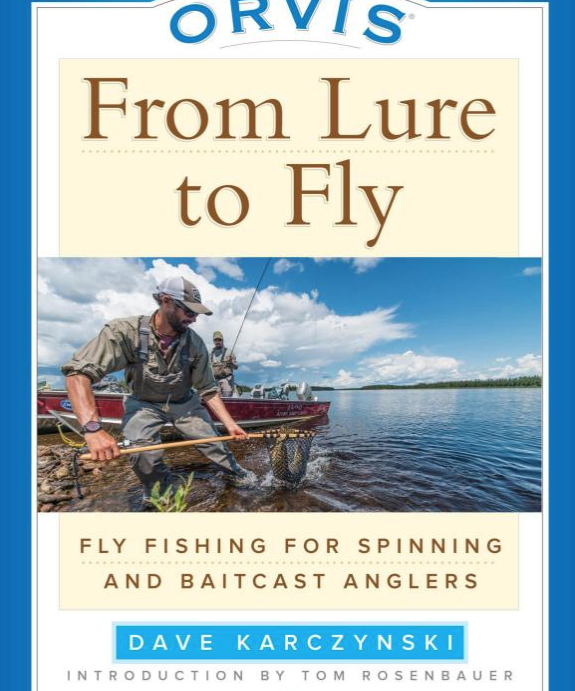I can’t count the times I’ve heard someone tell me something along the lines of, “I’ve always wanted to learn how to fly fish, but I have no idea where to start and no one to teach me.”
This phrase, or one a lot like it, usually comes from spin-cast or baitcast anglers who, in their own fishing adventures, have come across fly fishers standing in the river, magically waving the long rod and looking good doing it. And, many of these folks have realized, they’re catching fish.
But, invariably, they’ll tell me, “It just looks so difficult. So complicated.”
Well, my friend Dave Karczynksi has just made that last declaration obsolete. With his book, “From Lure to Fly,” the new addition to the Orvis fly fishing library, Karczynski makes the transition from good, old-fashion spin-fishing to fly fishing look wonderfully simple. And, as Orvis’ Tom Rosenbauer points out, it really is.
“No matter how old you are, coming to fly fishing from conventional fishing is, in my opinion, the best education you can have for fly fishing,” Rosenbauer says. In the book’s introduction, he writes, “You are about to join someone I think you’ll come to feel is your fishing buddy. Dave will take you on a journey without condescension, and will explain all the silly fly-fishing jargon. He’ll reference similarities and differences to conventional fishing. He speaks your language.”
That much is true. A quick read through the pages of Dave’s new book gave me a very familiar feeling—I, too, started fishing with conventional tackle, and like Rosenbauer, I taught myself to fly fish, simply because it looked like fun. Had I had this resource at my fingertips, I might have become a better fly fishing sooner.
Dave starts the book out just as he should—with fly fishing for panfish, like bluegill and such. These fly-friendly pond-dwellers are the perfect experiential laboratory mice for new fly anglers. They’re not terribly sophisticated. They will willingly hit a fly and they offer a realistic shot at success early in the process. Think about it. Teaching someone completely new to fly fishing by throwing them onto the S-curves on Silver Creek is like teaching Wilbur Wright how to fly the Space Shuttle. But put a fly rod in a new fly fisher’s hands and turn him or her loose on a bluegill pond in the spring, and you’ll watch someone catch the fever. It’s the equivalent of the hook-set, honestly.
Rosenbauer is right on another topic—Dave won’t make you feel like an idiot for not knowing what a size 20 CDC emerger is, or that you should be using 5x tippet on a 9-foot, 5-weight, medium-action rod with double-tapered fly line and a 10-foot monofilament leader. Instead, he explains the similarities between conventional and fly tackle in spin-fishing terms. You’ll come to see that, despite the craft’s best (albeit unintentional) efforts to make it seem so difficult, fly fishing isn’t all that different that conventional fishing.
“It’s just another way of sticking a hook in a fish’s mouth,” Rosenbauer says.
If you’re a conventional angler who might be a little “fly curious,” Dave’s book is the perfect entry point into the world of fly fishing. For the younger crowd weened on spinning gear, consider “From Lure to Fly” your “cheat code” to the fly-fishing adventure. As someone who’s been where you are—marveling at the beauty of the craft but intimidated by the perceived difficulty of it—I can’t recommend this book enough. With Dave as your “fishing buddy,” you’ll walk, not run, through the art of fly fishing, starting with those marvelous little pond-dwellers and ending up on an Alaskan salmon river casting to migrating kings.
And, as an aside, Dave includes a chapter on fly fishing for carp, which can prove every bit as challenging as taking on more heralded species, like steelhead and bonefish.
It’s journey worth taking, even if your goal is to simply add fly fishing to your repertoire (I’ll warn you, though, once you start fly fishing, you may never go back. I no longer own spinning gear—fly fishing has consumed me). In the end, Rosenbauer’s words prove sage. It’s just fishing.
And if you know how fish with spinning gear, you’ve got a real head start.
— Chris Hunt



